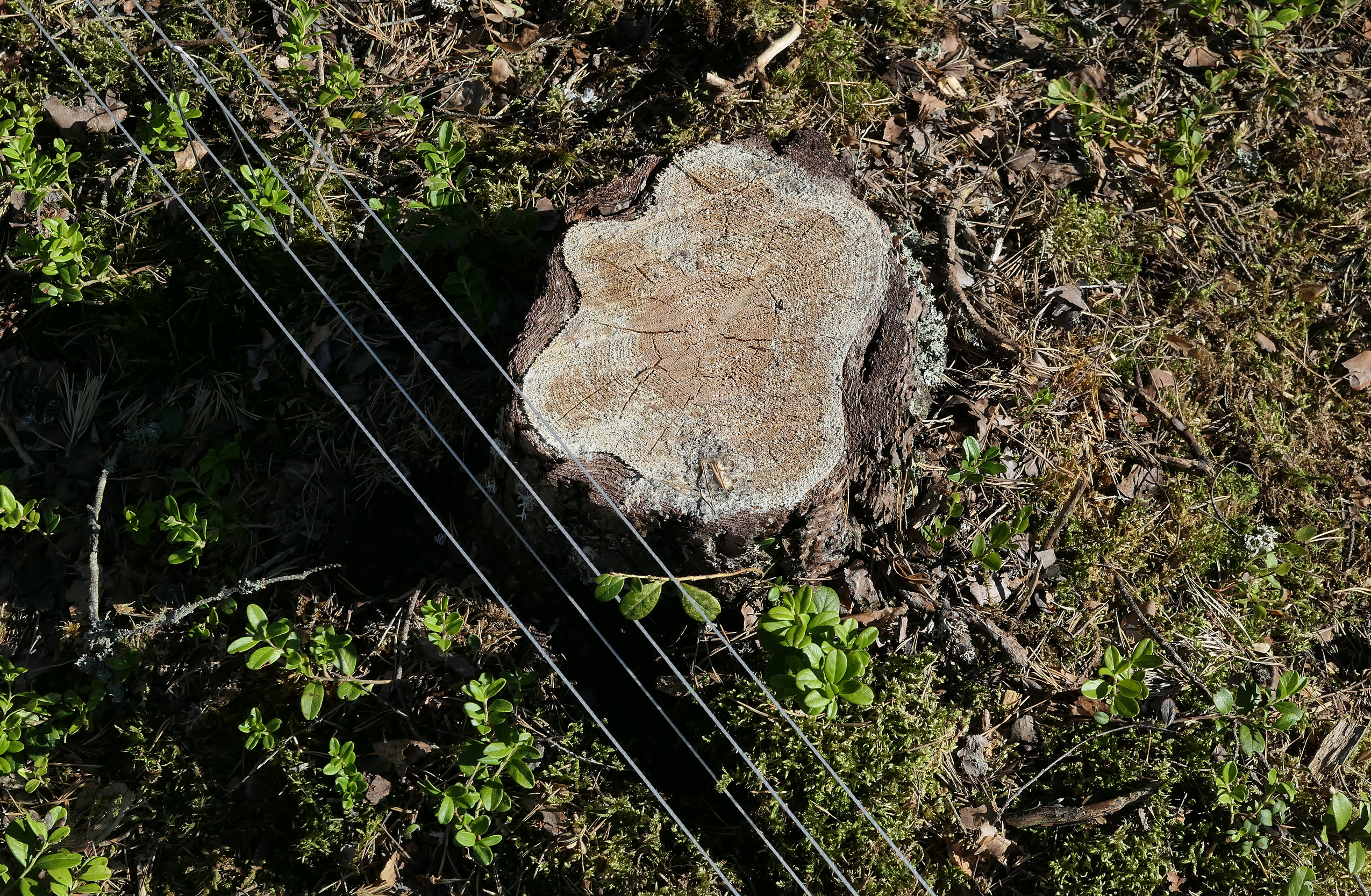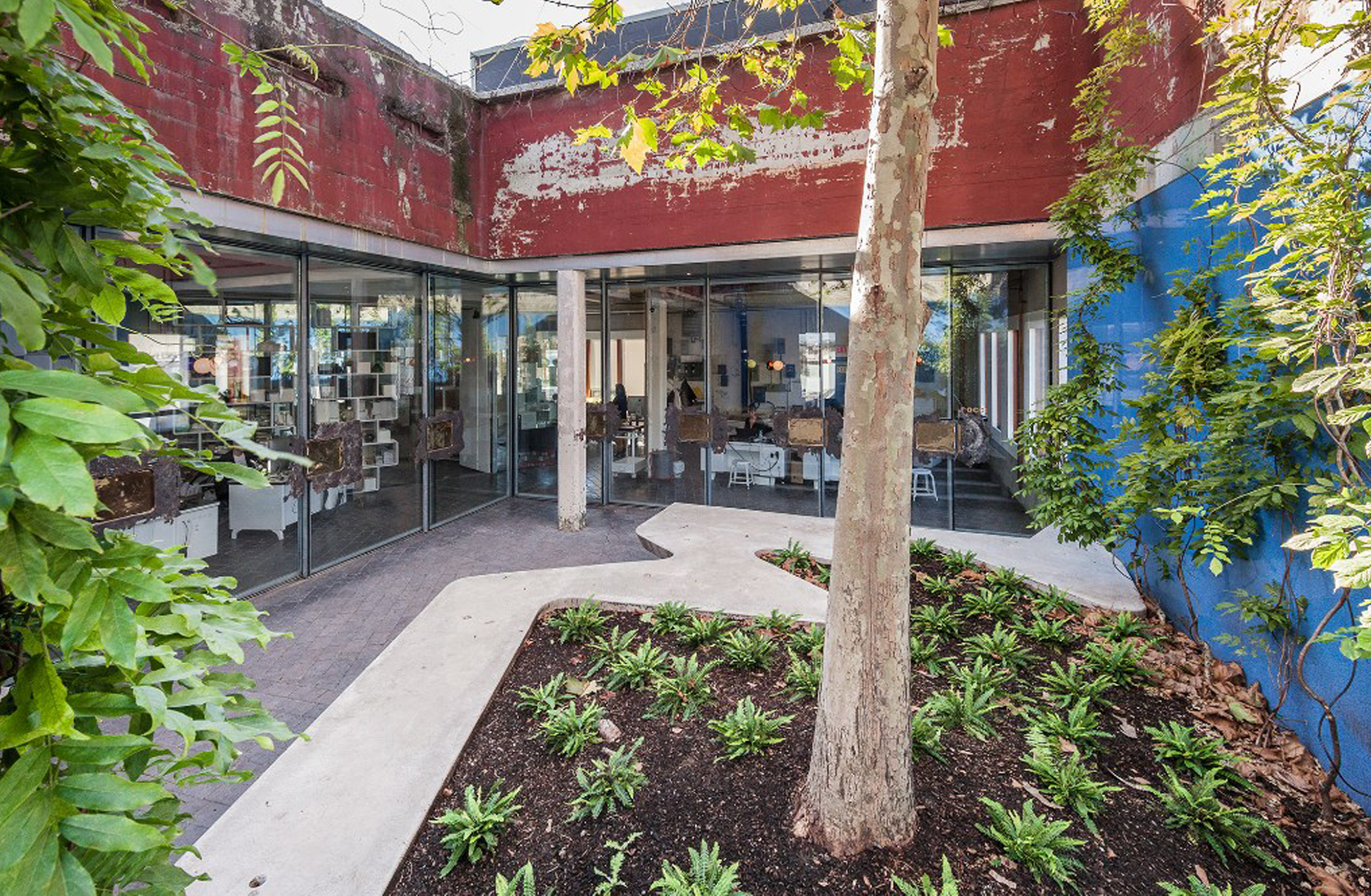
Forest Markings Tests
Safe Crossing for White Tail Deer / Obliques
Location: Korppoo, Finland
Date: June 2022
Media: Forest, masonry string, survey flags
Dimensions: Various
Granting Agency: Archipelago Art Residency in Korpo (AARK)
Safe Crossing for White Tail Deer / Obliques
Location: Korppoo, Finland
Date: June 2022
Media: Forest, masonry string, survey flags
Dimensions: Various
Granting Agency: Archipelago Art Residency in Korpo (AARK)
In tandem with the string pieces, studies on Korppoo turned to installations whose first act is clearing and cleaning, and thereafter uncovering. I selected sites despoiled by logging operations and worked with the trunks of trees felled but left in place. In Safe Crossing for Whitetail Deer I removed accumulations of moss, dirt, twigs, and organic debris from a logging road to create figures that seen in plan would read as four rectangles. Their order on site is less clear, however, due to the depth of the accumulated organic matter and the contour of the rock surfaces. As a cluster the individual rectangles cohere as a figure set in opposition to the axis of the road, with a very distant recall of the white markings of crosswalks for priority crossings of streets. Unlike the string pieces, these removals will remain until natural processes of precipitation, wind, and growth will reclaim them.
The second installation integrates aspects of clearance with the spatial marking effected by the string. The site, also in a logged forest zone, was covered with the needles, branches and trunks left by tree felling, left one assumes to rot and (possibly) support regrowth. Until that day, the land will appear desolate. Clearing the site of this material, and taking the ground back to its basic contour, revealed the presence of cut trees that had fallen as if a giant version of a game of pick-up-sticks. Tree stumps played counterpoint to tree trunks. One could have left work on the site at this stage as a counterpoint to the patter of trees left vertical. But once again using string, the lines of the trunks were extended in space to conjoin in selected points among them. In addition, the intersections of two trunks were lashed with the string to underscore the points at which the linear forms of two or more trunks intersected in a field that could be plotted—and given attention by the lashings.
The second installation integrates aspects of clearance with the spatial marking effected by the string. The site, also in a logged forest zone, was covered with the needles, branches and trunks left by tree felling, left one assumes to rot and (possibly) support regrowth. Until that day, the land will appear desolate. Clearing the site of this material, and taking the ground back to its basic contour, revealed the presence of cut trees that had fallen as if a giant version of a game of pick-up-sticks. Tree stumps played counterpoint to tree trunks. One could have left work on the site at this stage as a counterpoint to the patter of trees left vertical. But once again using string, the lines of the trunks were extended in space to conjoin in selected points among them. In addition, the intersections of two trunks were lashed with the string to underscore the points at which the linear forms of two or more trunks intersected in a field that could be plotted—and given attention by the lashings.






























